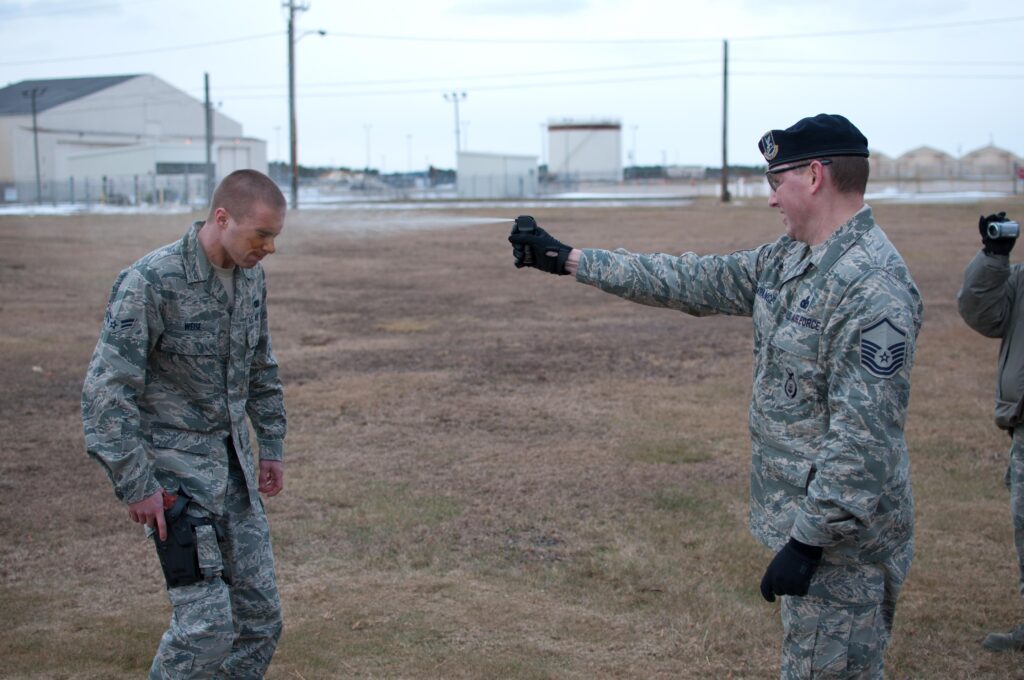Table of Contents
- Understanding the Importance of Comprehensive Pepper Spray Training for Security Professionals
- Essential Techniques and Safety Protocols Covered in Pepper Spray Classes
- Incorporating Realistic Scenario-Based Drills to Enhance Response Skills
- Selecting the Right Training Provider for Optimal Learning Outcomes
- Final Thoughts
Understanding the Importance of Comprehensive Pepper Spray Training for Security Professionals
Security professionals face unpredictable situations that demand quick thinking and responsible action. Mastering pepper spray usage is not just about learning to activate a canister; it involves understanding the legal, ethical, and practical aspects that govern its deployment. Comprehensive training ensures that officers can effectively assess threats, apply the spray with precision, and recognize when alternative de-escalation techniques might be more appropriate. This multifaceted approach not only protects the security officer but also minimizes unnecessary harm, maintaining the professionalism and integrity expected in high-stress environments.
Quality training programs go beyond basic handling and include:
- Legal compliance education to navigate complex jurisdictional regulations
- Scenario-based drills that build confidence and muscle memory
- Post-use protocols focusing on reporting, medical assistance, and follow-up
- Maintenance and safety checks for ensuring equipment readiness
Essential Techniques and Safety Protocols Covered in Pepper Spray Classes
Mastering the effective use of pepper spray begins with understanding several critical techniques that ensure both efficacy and control. Security officers are taught how to identify the ideal deployment distance, typically between 6 to 10 feet, optimizing the spray’s impact while maintaining their own safety. Emphasis is placed on wrist and arm positioning to guarantee a stable and accurate stream, reducing the risk of missing the target or causing self-contamination. Instructors also focus on situational awareness, teaching participants to assess environmental factors such as wind direction and proximity to bystanders. Training includes rapid draw methods and multiple bursts usage, adapting to evolving threat scenarios to neutralize aggressors swiftly and decisively.
Safety protocols are ingrained throughout the training to protect both the officer and those nearby. Classes highlight the importance of proper storage and handling, ensuring the canister is always secure but readily accessible during emergencies. Participants learn to wear appropriate personal protective equipment during drills, including eye protection, and are instructed on immediate decontamination procedures in case of accidental exposure. Additionally, legal considerations and ethical responsibilities surrounding pepper spray deployment are thoroughly covered, reinforcing that its use is reserved solely for legitimate self-defense situations. Integrating these safety measures establishes a foundation of confidence and professionalism, enabling security officers to respond effectively without compromising their own well-being.
- Optimal deployment distance and spray technique
- Wrist and arm control for precision
- Environmental and situational assessment
- Proper handling, storage, and accessibility
- Personal protective equipment usage during training
- Immediate response and decontamination protocols
- Legal and ethical considerations for use
Incorporating Realistic Scenario-Based Drills to Enhance Response Skills
To truly prepare security officers for real-world confrontations, training must go beyond theoretical instruction and static practice. Incorporating realistic, scenario-based drills allows officers to engage with high-pressure situations that mimic the unpredictability of actual threats. These immersive exercises enhance critical thinking, decision-making, and muscle memory, ensuring that responses become instinctive and effective under stress. From mock assaults in confined spaces to rapid threat assessment during crowds, these drills sharpen an officer’s ability to deploy pepper spray confidently and responsibly.
Key components of effective scenario-based training include:
- Dynamic role-playing with trained actors to simulate potential attackers
- Environmental variations such as low light or confined spaces to test adaptability
- Timed responses to recreate urgency and pressure
- Post-drill debriefings focused on improving technique and decision-making
By integrating these challenging scenarios into pepper spray training, security professionals gain not only the physical skills but also the confidence and judgment necessary to neutralize threats swiftly and safely.
Selecting the Right Training Provider for Optimal Learning Outcomes
Choosing a training provider is pivotal in ensuring security officers gain the most from their pepper spray instruction. It’s essential to evaluate providers based on their credentials, experience, and course customization options. A reputable organization will have certified instructors with practical law enforcement backgrounds, providing trainees with real-world insights that enhance learning retention. Additionally, the curriculum should be adaptable, addressing specific security environments and legal requirements relevant to the officers’ duties.
Beyond qualifications, consider the training delivery methods and support systems offered. Providers who utilize a blend of hands-on practice, scenario-based simulations, and up-to-date instructional materials tend to produce confident and competent security officers. Moreover, ongoing access to refresher courses and post-training assistance ensures skills stay sharp and compliance is maintained. When selecting a provider, prioritize transparent communication and feedback mechanisms that foster continuous improvement in training quality.
Final Thoughts
In conclusion, effective pepper spray training classes are essential for security officers to confidently and responsibly carry out their duties. Proper instruction not only ensures the safety of the officer but also of the public they serve. By emphasizing technique, legal considerations, and practical scenarios, these training programs equip security professionals with the skills needed to de-escalate potentially dangerous situations with minimal harm. Investing in comprehensive pepper spray training is a proactive step toward fostering safer environments and enhancing overall security effectiveness. Whether you’re a security agency or an individual officer, prioritizing such education can make all the difference in the field.Check Our Other Blogs
- StunGun – Your Trusted Source for Stun Guns, Laws, and Self-Defense Tips
- PepperSprayLaws – Your Trusted Resource for Pepper Spray Information
- StunGunLaws – Your Trusted Guide to Stun Gun Legality and Safety




